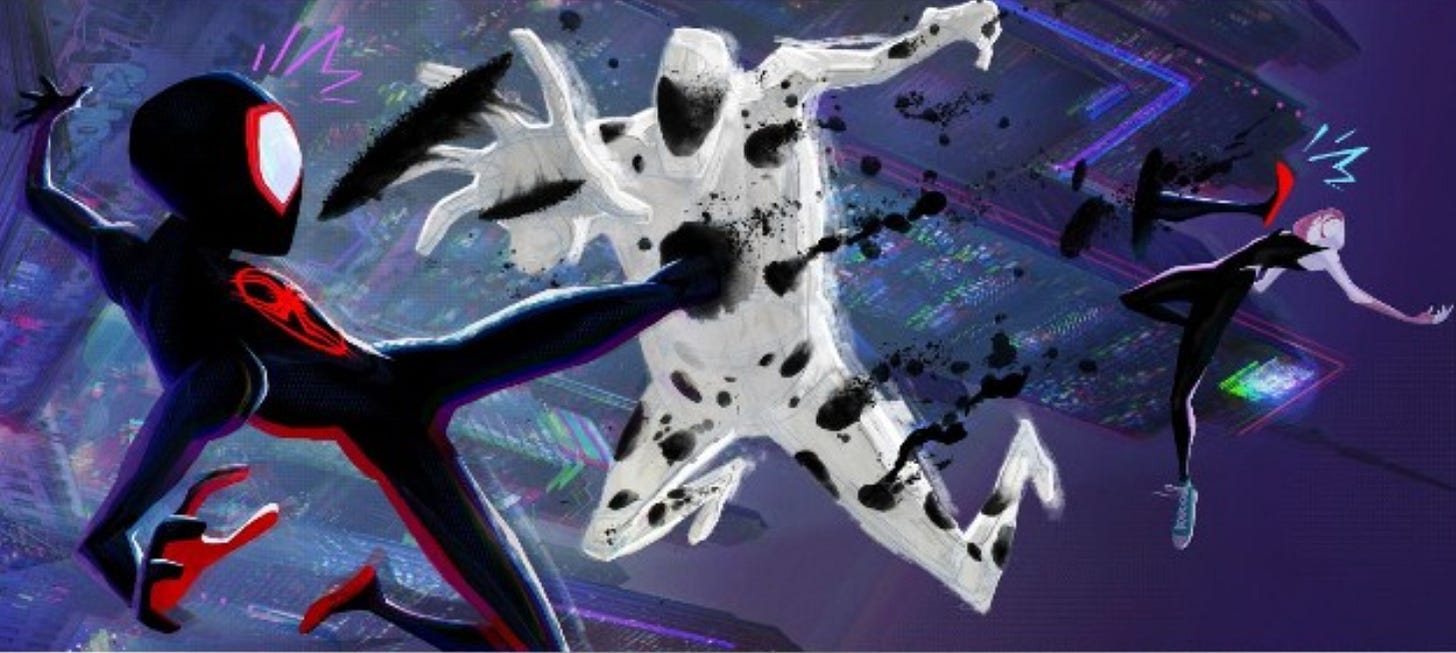THB #379: Spider-Man: Across The Spider-Verse (spoiler-free)
There is going to be a fight in the days to come, as critics fight to be the one to best love this movie.
And the truth is, it’s hard to put into words. Because this animated film is more about the feeling than the words or the plot or any performance. It dares to be cinematic in the way you might feel about an Ari Aster movie or a more painterly Everything Everywhere All At Once. The recent movie it most recalled for me was Brett Morgan’s Moonage Daydream, which bent the idea of what a documentary is.
Part of what fascinates me about the film is that Phil Lord and Chris Miller reloaded this film with an entirely different group of directors than Into The Spider-Verse, Joaquim Dos Santos, Kemp Powers, and Justin K. Thompson “replacing” the Oscar-winning trio of Bob Persichetti, Peter Ramsey, and Rodney Rothman. Dave Callaham and Lord’s partner, Chris Miller leap into the co-writing couch with Phil.
And the new group, in the wake of a hugely successful, Oscar-winning film, that felt li…
Keep reading with a 7-day free trial
Subscribe to The Hot Button by David Poland to keep reading this post and get 7 days of free access to the full post archives.




